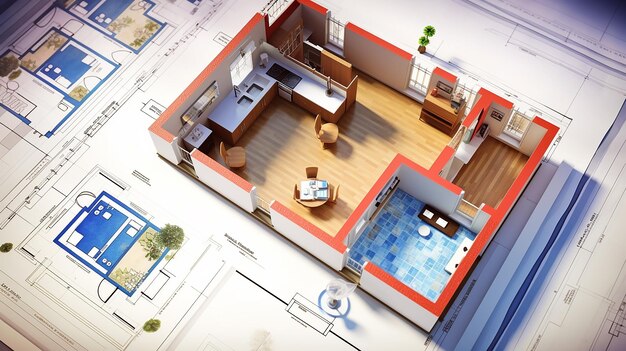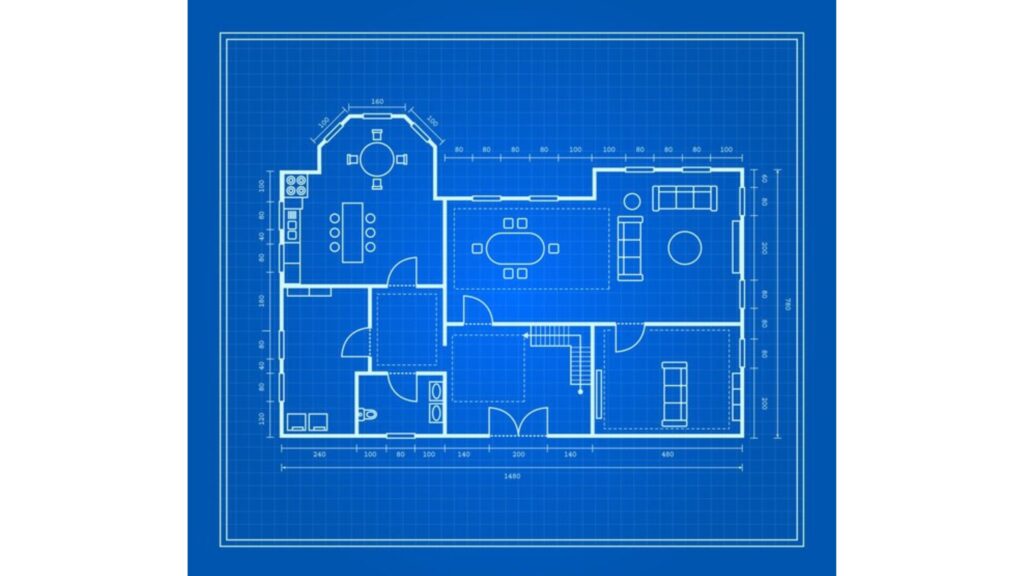
In the ever-evolving landscape of architectural and interior design, innovation is the driving force behind every blueprint and floor plan. Traditional methods, reliant on pencil sketches and manual drafting, have paved the way for a more efficient, precise, and versatile approach – CAD design for floor plans.
This transformative technology has fundamentally changed the way floor plan layouts are conceived, giving architects and designers powerful digital tools to shape their visions.
Benefits of CAD Design for Floor Plans Layouts
Here, explore the importance of CAD design for floor plans layouts.
The Precision Revolution
CAD design brings an unmatched level of precision to the art of floor plan layout. Every line, angle, and measurement is exact, eradicating the margin for human error. Architects and designers can now ensure that each element of a house plan aligns flawlessly, whether it’s the position of a window to capture optimal natural light or the dimensions of a room for ideal functionality. This precision is a game-changer in creating functional and aesthetically pleasing spaces.
Build Smarter with Precision CAD Floor Plans
Say goodbye to costly mistakes. Our CAD floor plan layouts help architects, engineers, and builders achieve accuracy and efficiency in every project.
Efficiency Unleashed
In the past, creating house plans was a time-consuming endeavor. With CAD software, however, architects can significantly reduce the time required for the initial design phase. Ready-made templates and libraries of design elements expedite the process.
Furthermore, CAD design enables quick adjustments and iterations, allowing designers to explore multiple possibilities effortlessly. This newfound efficiency means that clients receive their house plans faster than ever before.
The Power of Visualization
One of the most significant advantages of CAD design is the ability to create highly detailed 3D visualizations of floor plans. This visual aspect enables architects, designers, and clients to walk through a virtual representation of the space long before construction begins. It’s a transformative experience, allowing for better decision-making and fine-tuning of design elements.
Clients can easily grasp the layout and flow of their future home, making the planning phase more engaging and interactive. Also, 3D Floor Plans for Real Estate Marketing Strategies which helps both, buyers and sellers with their own benefits in all manner.

Seamless Collaboration
Collaboration is at the heart of successful floor plan design. CAD software facilitates this by enabling architects, interior designers, structural engineers, and other stakeholders to work seamlessly on a single digital platform.
Changes and updates are instantly visible to the entire team, fostering better communication and ensuring that everyone is on the same page. This collaborative approach results in more harmonious and well-executed designs.
Environmental Considerations
Modern house plans often incorporate eco-friendly features. CAD design plays a pivotal role in optimizing these elements. Architects can simulate the performance of various eco-friendly additions, such as solar panels, energy-efficient HVAC systems, and sustainable materials. This ensures that the house plans are not only aesthetically pleasing but also environmentally responsible.
Adapting to Trends
Architecture and interior design are influenced by evolving trends. CAD design keeps professionals updated with the latest in the industry. Whether it’s the integration of smart home technology or the adoption of open-concept floor plans, Architectural design services allows to Create 3D Floor Plans for architectural Companies. This adaptability ensures that house plans are in tune with contemporary lifestyles and preferences.

The Final Blueprint
From sketching initial ideas to producing the final blueprint, CAD design is an invaluable tool in the creation of floor plan layouts. Its precision, efficiency, visualization capabilities, and support for collaboration have revolutionized the industry. As we continue to embrace technological advancements, the role of CAD designfor floor plans design, is shaping our living spaces will undoubtedly remain pivotal.
CAD Design for Modern House Plans
Modern house plans often feature innovative layouts and intricate designs. CAD is the perfect tool for turning these ideas into reality. It accommodates complex geometries and intricate details that would be challenging to draft manually.
As technology continues to advance, so too will the capabilities of CAD design for floor palns in transforming the floor layout. From Artificial Intelligence (AI) integration for predictive design to the adoption of Virtual Reality (VR) for immersive walkthroughs, CAD is propelling the industry into exciting new territories.
In conclusion, CAD design has revolutionized the way floor plan layouts are created and visualized. Its precision, efficiency, and collaborative features make it an indispensable tool for architects and designers. With CAD design, the possibilities for designing innovative, sustainable, and visually stunning spaces are limitless.
Whether you’re planning a single-floor house design or envisioning the layout of a modern architectural masterpiece, Just drop a message here, or contact us on info@shalindesigns.com. Contact us now!